Educational Complex
TONUS, Paris
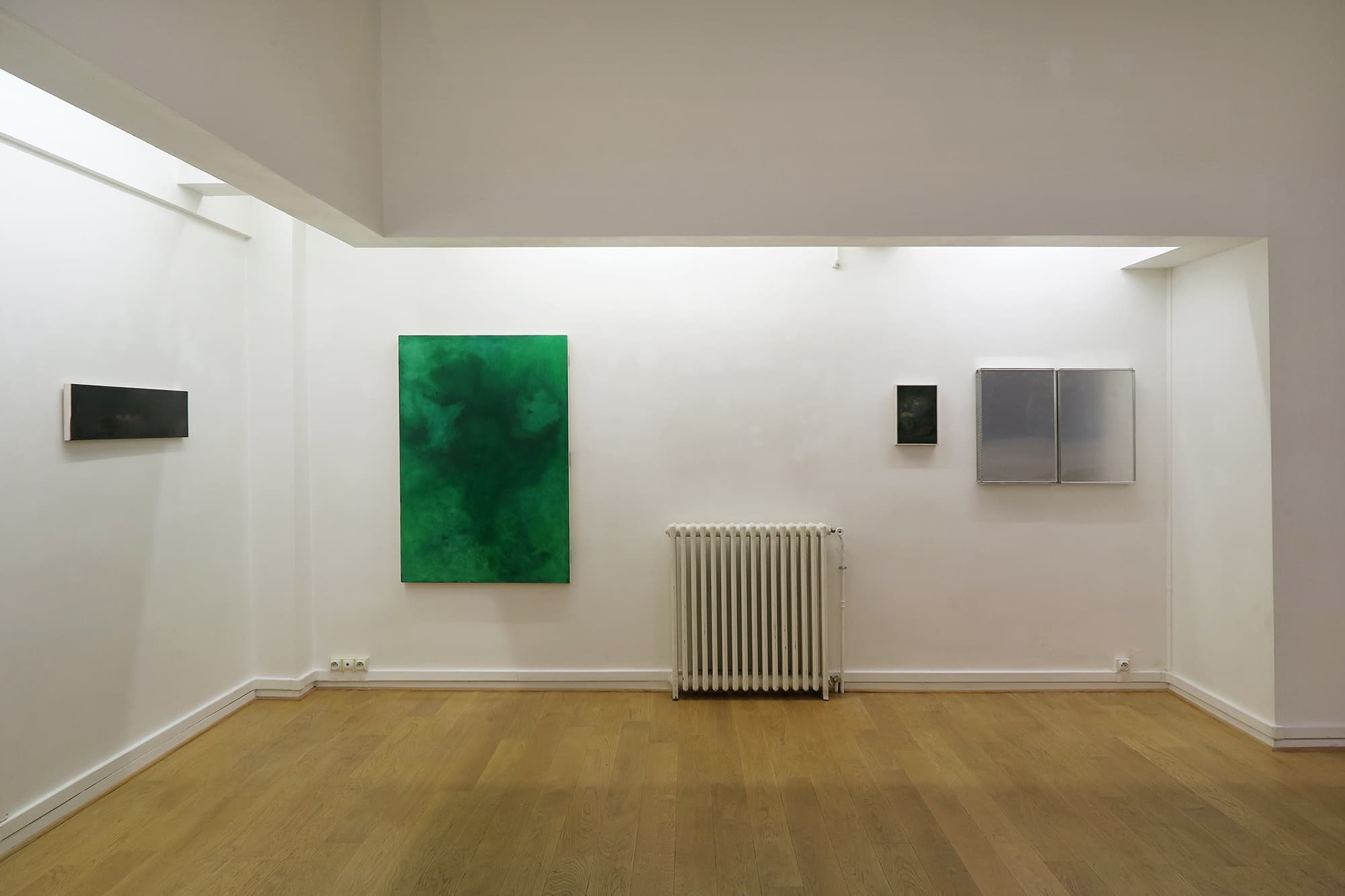
Installation View
Clémentine Bruno
Educational Complex
TONUS, Paris
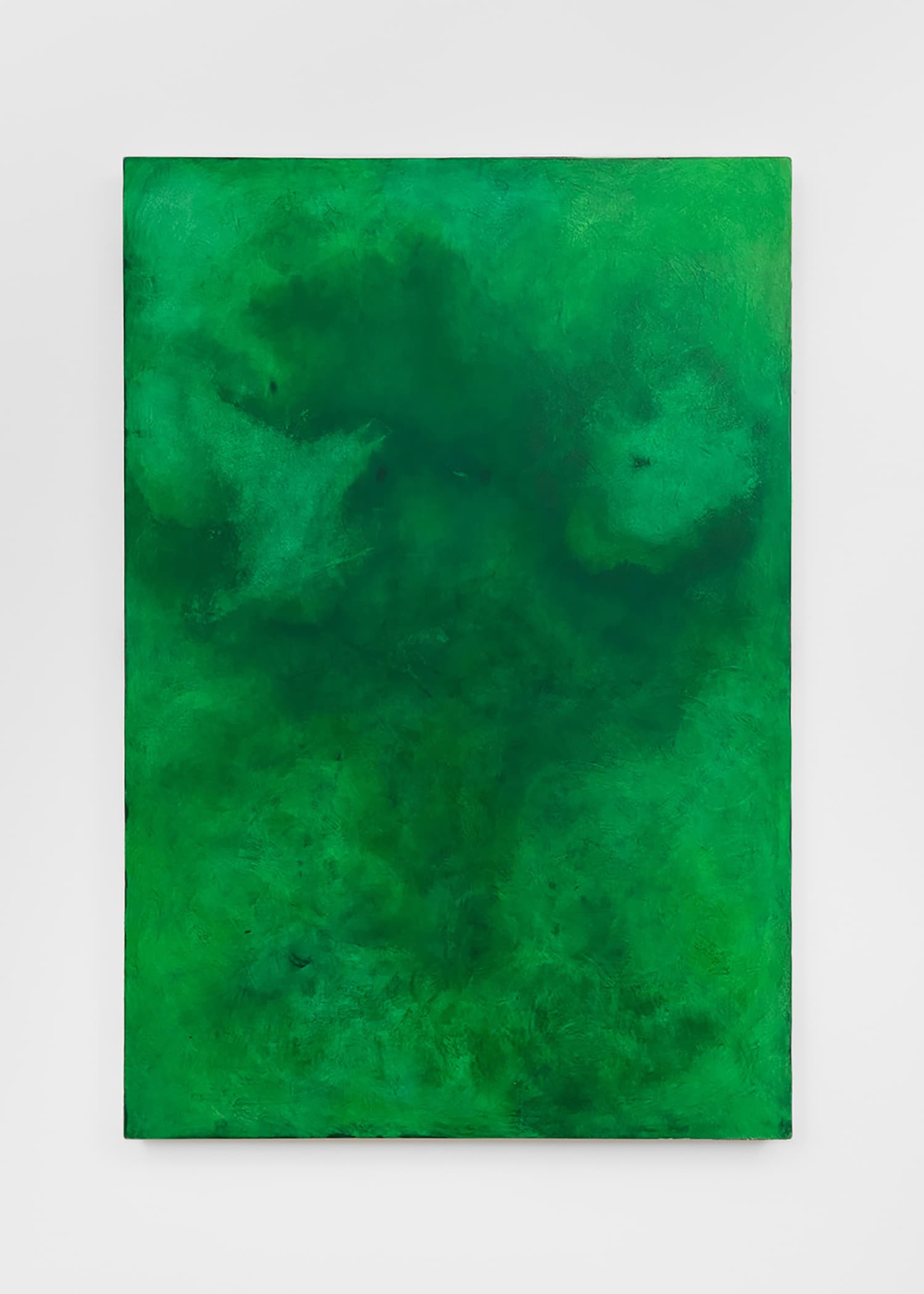
Clémentine Bruno
Landscape, green stain
2024
Oil and traditional gesso on wooden panel
130 × 88 × 5 cm
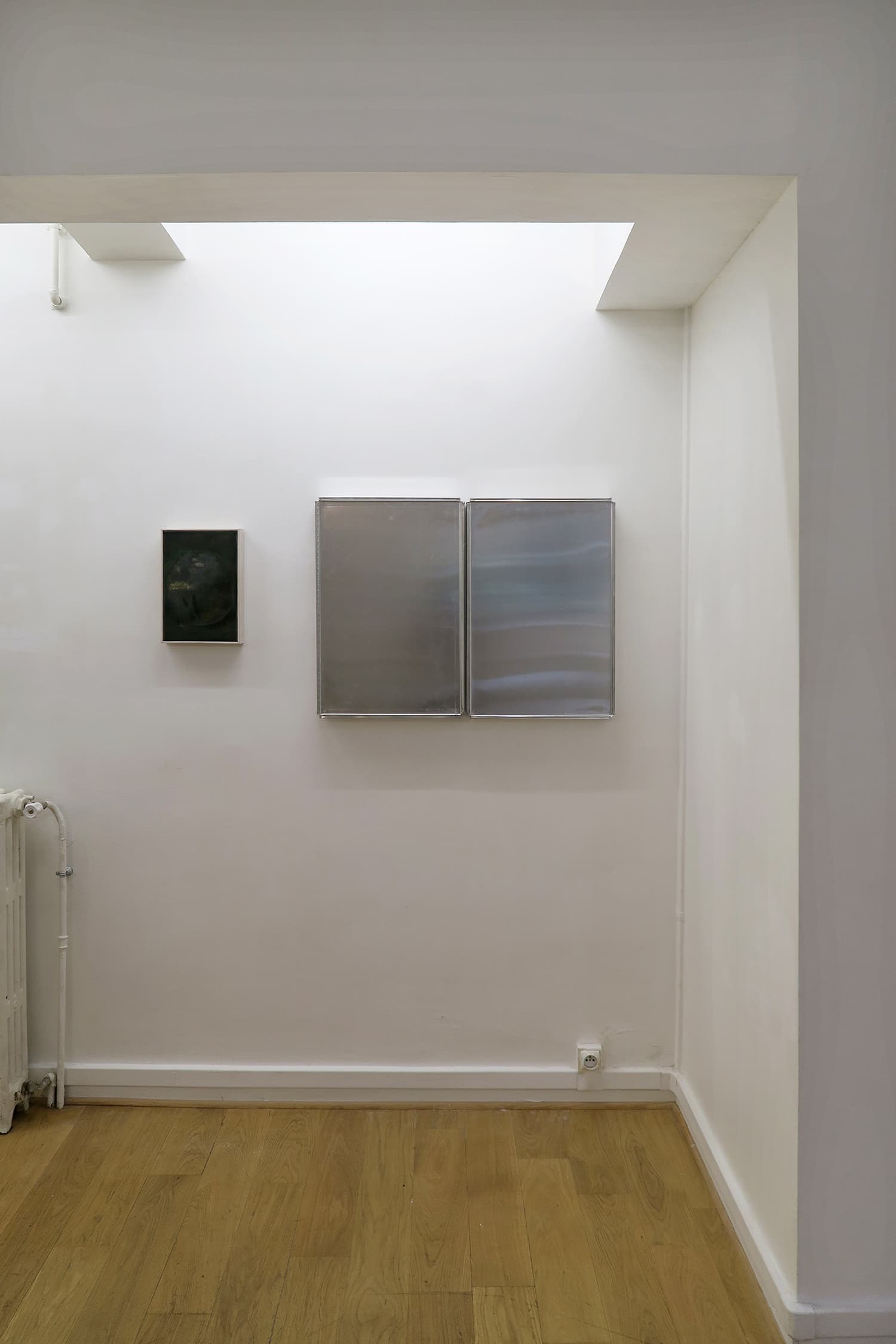
Installation View
Clémentine Bruno
Educational Complex
TONUS, Paris
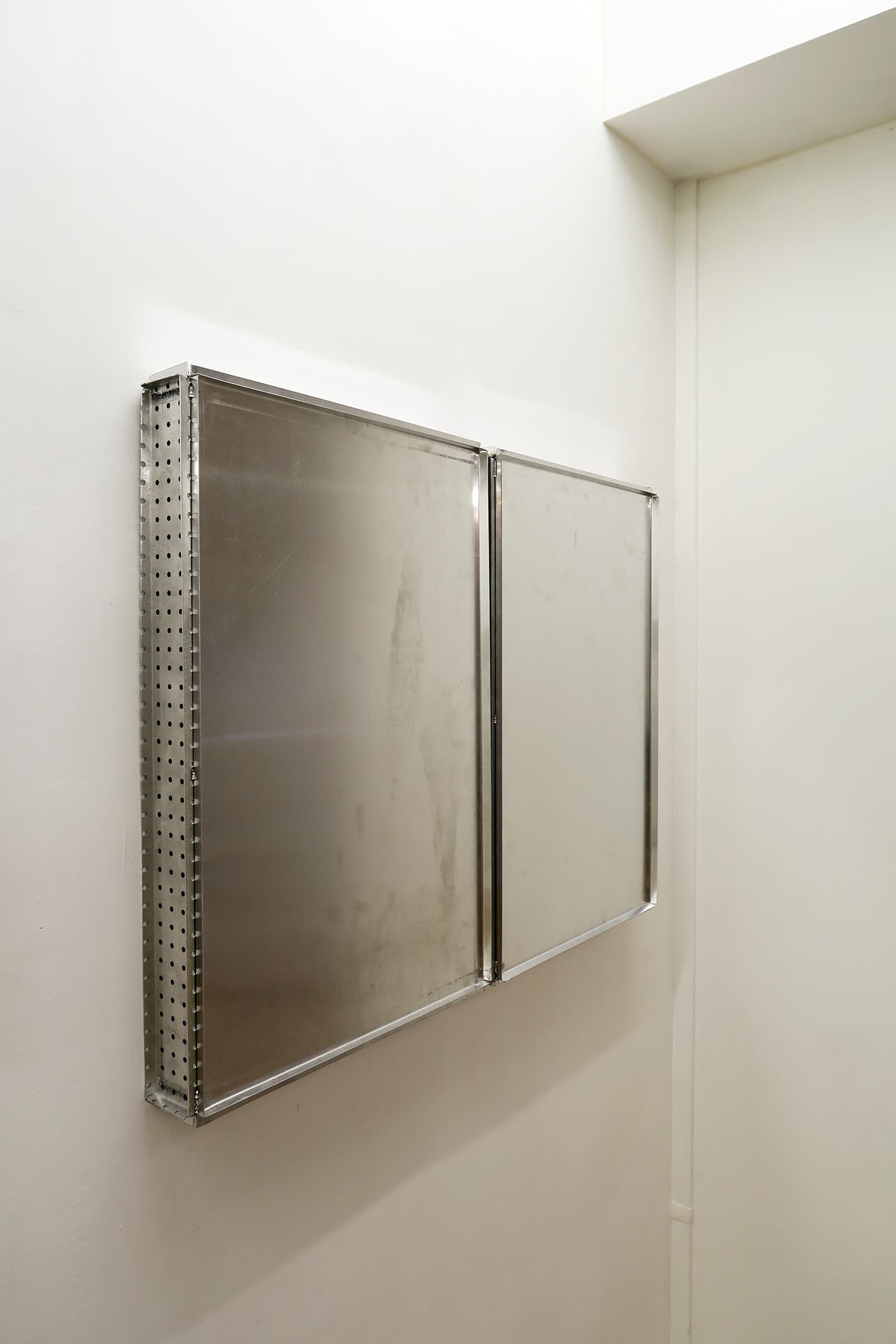
Clémentine Bruno
City box
2023
aluminium panels
60 × 40 × 7,5 cm
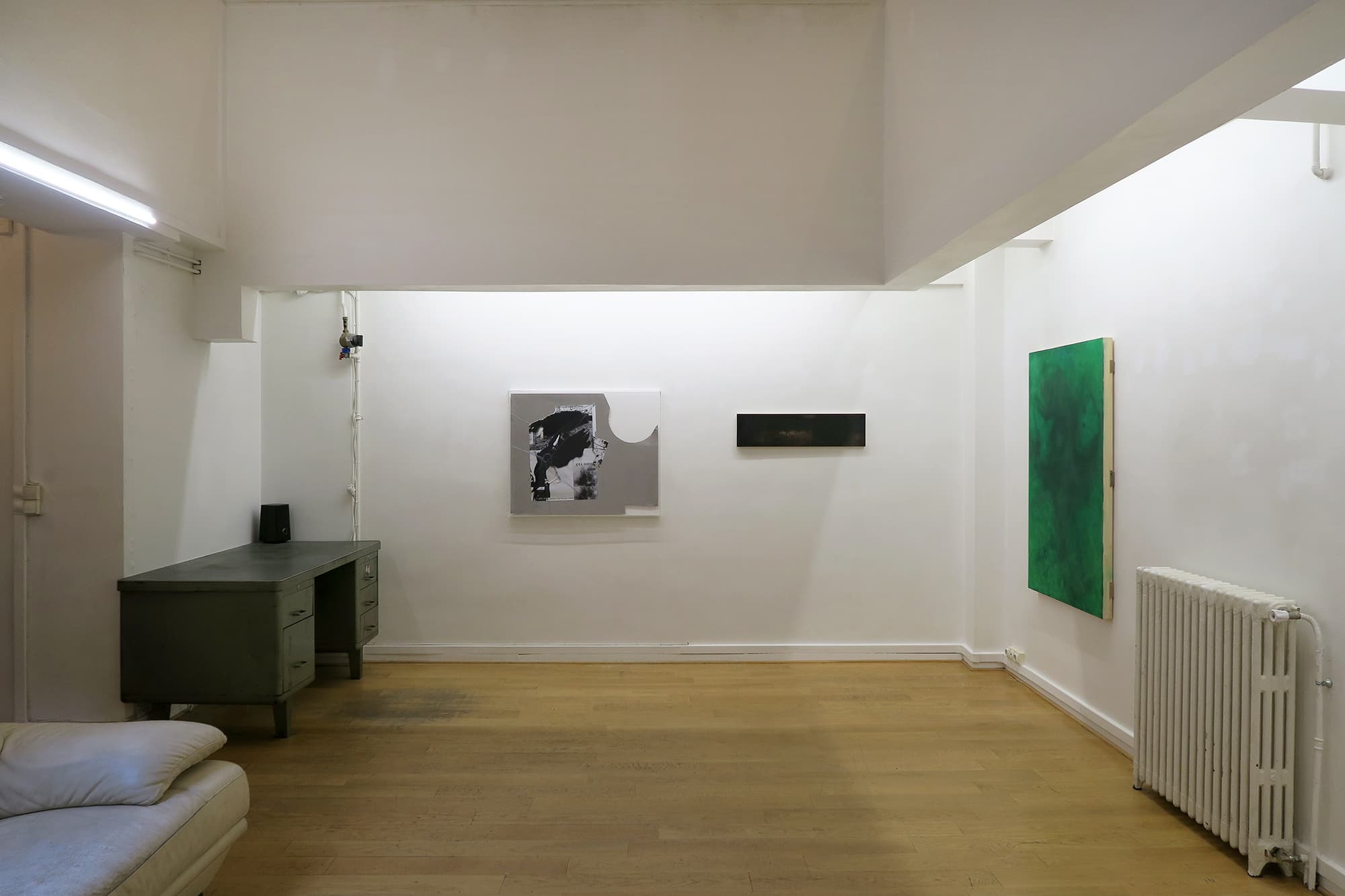
Installation View
Clémentine Bruno
Educational Complex
TONUS, Paris
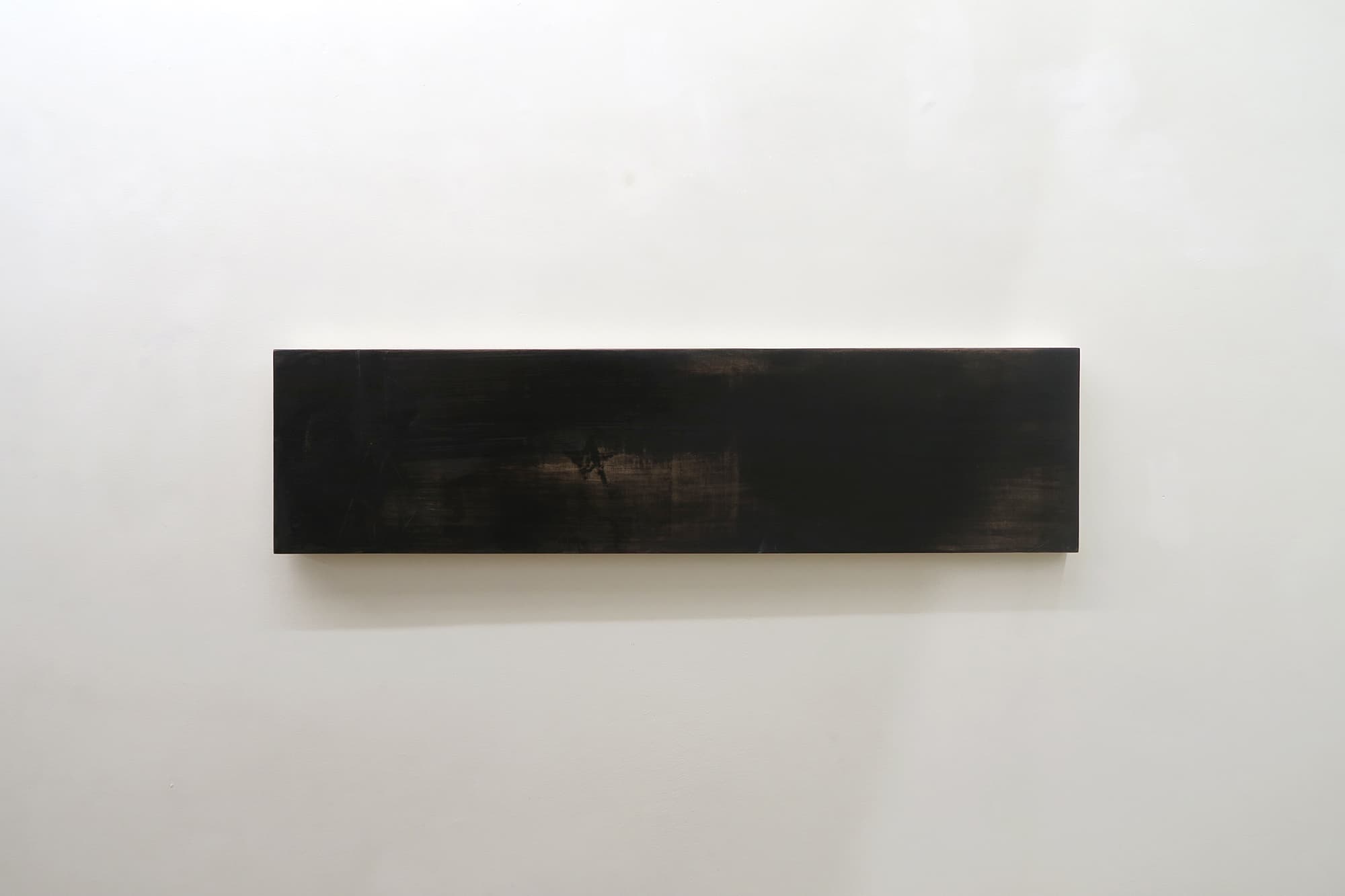
Clémentine Bruno
Landscape, brown star
2024
oil and traditional gesso on wooden panel
20,5 × 81 cm
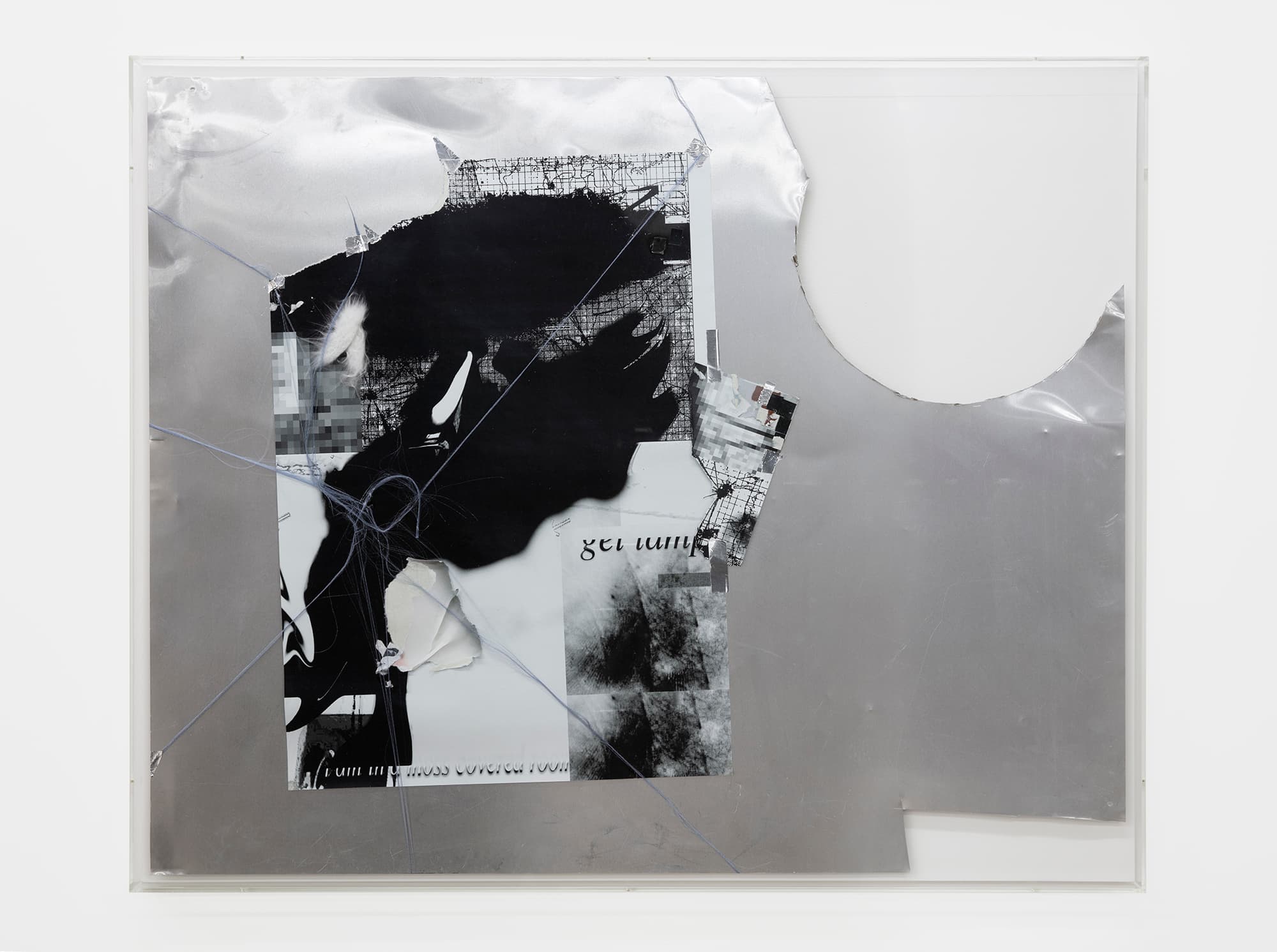
Clémentine Bruno
TOTAL XIV
2022
perspex frame, aluminium collage,
poster collab with Beatrice Vorster and Anna Clegg
78 × 91 × 5 cm
Complex: Clémentine Bruno makes us look at her exhibition at Tonus as a network of relationships producing the works’ context of meaning. Lined up like a series of words, a sentence written on two adjoining walls, the works make up what Clémentine Bruno calls a ‘textual scene’. Remove one term, swap two others, and it will say something else. Each sign is a reservoir of meanings, repressed or expressed, obscured or illuminated by the relationships it has with the others.
To ask how meaning is conferred is to raise the question of authority, the way in which it dictates its circumstances to its environment, the way in which it makes it speak, and even the way in which it speaks through it. Educationalexpresses a relationship of elevation, the premise of which is that something major imposes itself on something minor. The exhibition is thus allegorical of the hierarchical workings of art history: the paintings make explicit the industrial quality of the aluminium pieces they stand next to — and, by reverberation, the nobility of their own nature. But Educational Complexis also an allegory for the incursions that have hijacked the meaning (and direction) of art history — referring to the way in which 1960s conceptual art, from Donald Judd to arte povera, appropriated ‘minor’ elements. Using the title of a 1995 work by Mike Kelley as the verbatim reference for her exhibition, Clémentine Bruno invokes the patronage of an authority figure (a recognised artist) while choosing a practitioner who has overturned the phenomena of patronage.
If, through the titles, the three paintings are presented as landscape paintings, the coherence of meaning dissolves. Unlike that in Landscape, brown star,the comma in Landscape, green stain insinuates doubt as to the subject represented. The indeterminacy gives us back our freedom of interpretation. It also insists on the minimalist form of the representation — whereas Soft landscape paintinginsists on the medium and the artefactual nature of what we are looking at: not a landscape, but a landscape painting.
Clémentine Bruno works with paint through the laborious application of layers of gesso — implying covered, veiled but constitutive presences. Soft landscape painting, previously presented under a different title, operates like a ready-made that had already had a function in the field of art. Total,too, is made from an existing piece, encapsulated for Tonus in a Plexiglas box, similar to a museum glass case, which gives the object its preciousness and validates its status as a work of art or an object of history. It’s not so much the literal thickness of their three measurable dimensions than the incorporation of their contexts of production, presentation and circulation that makes these works, including paintings, sculptures rather than images.
These objects have therefore had previous lives. According to Pierre Le Loyer, one of the first authors to take an interest in the spectre, the latter is the manifestation of ‘a bodiless substance that presents itself to men against the order of nature’: something whose nature is not to be seen but whose desire is to be seen, which therefore needs to be embodied in order to appear, to haunt spaces, to possess objects. Clémentine Bruno speaks of City boxas an excuse, a pretext: the present work is an opportunity for a ghostly work (which may be a work to come) to materialise.
Craig Owens pointed out that allegory has the power to ‘save from historical oblivion that which is in danger of disappearing’, and this is how Clémentine Bruno’s installation works. By using gesso, a plaster whose composition has remained unchanged since the 14thcentury, and wood from an Italian supplier specialising in panels for religious icons, and by borrowing the subjects and compositions of history painting (such as the use of black and green colours to perform the landscape genre), Bruno introduces intact fragments — material, aesthetic and thematic — of art history into her work. This process of taking and integrating elements ‘as they are’, or of quoting, makes ghosts speak, preventing the artist from claiming total authorship over her work. In retrospect, this process calls into question the very authority of the Masters over their own production. What’s more, the incomplete nature of the fragment prevents the ghosts from putting forward a closed, definitive statement.
And it’s not just the long history of art history and its previous practice that Clémentine Bruno transfers to her pieces: the framework of the exhibition, in this case the domestic space of Tonus, also takes its place. A radiator is inserted into the ‘textual scene’ of the lined up works, like a punctuation mark: you wouldn’t think a comma was as important as a word, and yet it has a power of influence over them, however discreet. The exhibition is therefore a montage, a collage or an exquisite cadaver: a disparate whole, made up of clashes, a network of meanings from different registers, keeping us in a ‘complex’, ambiguous relationship with what comes before us and what surrounds us.
Estelle Marois